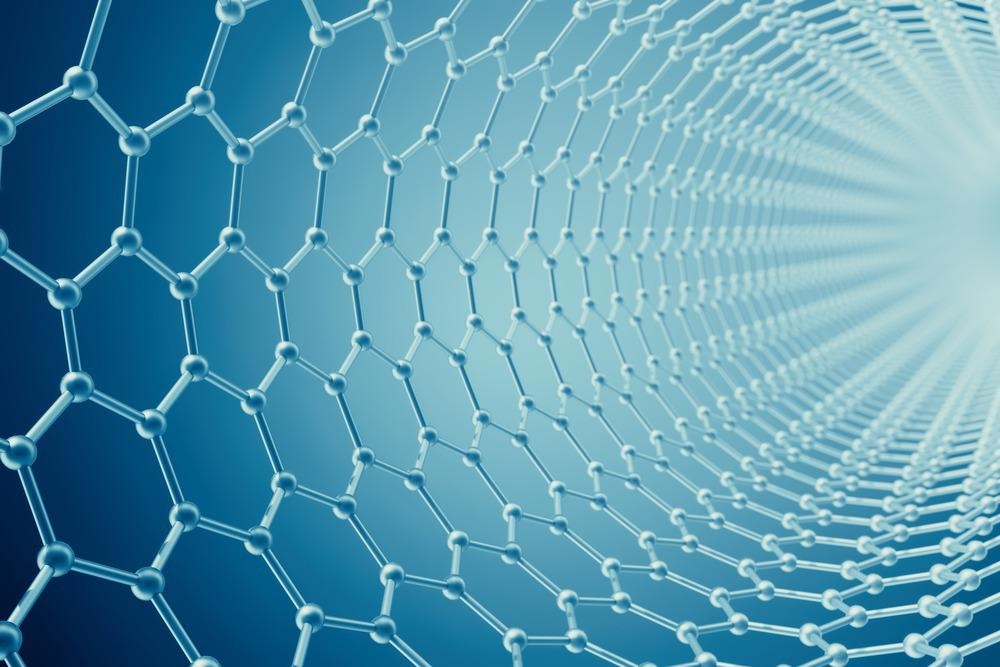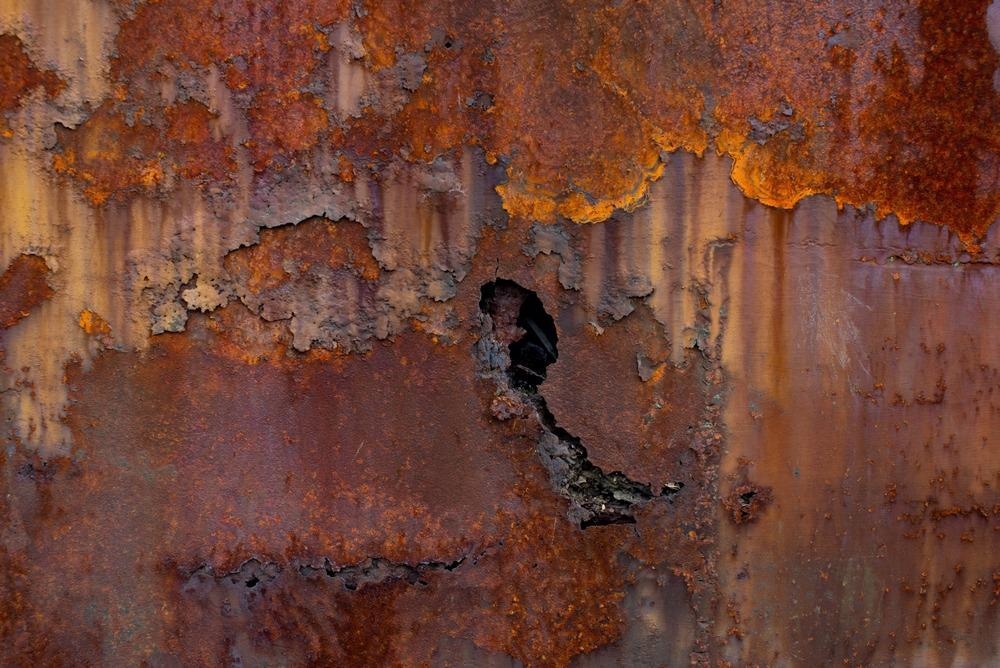The latest study in the journal Construction and Building Materials outlines the self-healing properties of a novel epoxy coating containing multi-walled carbon nanotubes (MWCNTs) as a nanocontainer that acts as a robust corrosion inhibitor.

Study: Self-healing epoxy coating doped with Elaesis guineensis/silver nanoparticles: A robust corrosion inhibitor. Image Credit: Rost9/Shutterstock.com
These smart nanocontainers are essentially useful for mild steel and other metals in adverse seawater environments.
Industrial Applications
According to the latest study, metal materials have a wide range of uses in various industries, including boreholes, dams, casing, tubing, tanks, pumps, structures, valves, and bridges. Despite their outstanding properties, metals typically become thermodynamically unstable and corrode in a variety of harsh situations. The primary corrosive agents include H2S, Cl-1, dissolved O2, SO42- and H2O.
Classic Protection Techniques
The corrosive action leads to a significant loss especially to civil engineering, mechanical engineering, and structural engineering sectors. To prevent metal from corrosion, many strategies are being explored. Metal forms, electroplating, galvanizing, corrosion protection, insulating films, and corrosion inhibitors are examples of these protective strategies.
Materials and Methods
The latest study revealed that the mild steel sheet was physically sliced into pieces of (40 mm 30 mm 1 mm), exfoliated using emery sheets of quality up to 1500 particle size, and then degreased with 70% acetone. To collect the EG inhibitor, the leaf extract of Elaeis guineensis (palm tree) was manually harvested, cleaned under flowing freshwater, and dried in a light-protected area. After drying leaves were crushed into a powdered form.
MWCNTs vessels (bought from Cheap Tubes, USA) with an external diameter of 10–20 nm, electrical conductivity of less than 100 s/m, a surface area of 233 m2/g, a length of 10–30 m, and a density of 2.1 g/cm3 were employed.
MWCNTs containers were filled with EG/AgNPs corrosion inhibitor powder, which was dissolved in 200 mL of (70 percent acetone, (RCI Labscan)) for 48 hours to create a saturated solution.
To examine the electrochemical performance of ordinary and encased mild steel (MS) with the blank coating and one modified with MWCNTs-EG/AgNPs exposed to saltwater, potentiodynamic polarization and EIS measurements were conducted.
DC polarization experiments were conducted over potential voltage ranges ranging from 250 mV to +250 mV concerning the open circuit potential at 0.5 mV/s.
Surface Characterization
An AFM method (Nano Wizard 3, JPK) was utilized in the novel research to photograph the mild steel surface (30 mm 40 mm 1 mm) for void epoxy coating and filled with smart nanocontainers. The XRD pattern was obtained using the Rigaku SmartLab 3 kW framework for analyzing the chemistry of the reaction products of mild steel surfaces at the scraped region after 42 days of immersion in saltwater.
The bond strength of coated mild steel (30 mm 40 mm 1 mm) for blank epoxy adhesive and filled with smart nanocontainers was determined using a pull-off adhesion tester of model-DeFelsko Corporation, USA.

Metal corrosion. Image Credit: Quisquilia/Shutterstock.com
The surface morphology of MWCNTs was investigated using a FESEM (model-Hitachi, SU8020) at a 2 kV accelerating voltage, both before and after loading with green EG/AgNPs inhibitor.
Research Findings
MWCNTs and MWCNTs-EG/AgNPs had various diameters, and green nanoparticle inhibitors were largely found in the nanotubes themselves. This resulted in a typical elevation in the diameter of the tubes from 12.7 nm to 42.7 nm, suggesting that the inhibitor was effectively loaded into the carbon nanotube.
The corrosion behavior of epoxy coated MS in a seawater solution was examined by the EIS method, in the presence and absence of 5% EG/AgNPs at 7, 21, and 42 days. According to the impedance spectra, the rise in semicircle diameter is directly and proportionately connected to the exposure period of mild steel when the EG/AgNPs inhibitor is present.
The weight of smart nanocontainers (MWCNTs-EG/AgNPs) decreased with increasing temperature, exhibiting three stages of weight loss. The inhibitory effect of EG/AgNPs extract increases with immersion duration, reaching a maximum of 93.59 percent after 42 days of exposure to saltwater.
In light of this, it is clear that EG/AgNPs extract has a considerable inhibitory effect on mild steel corrosion in the setting of a saltwater solution.
This implies that epoxy coatings prevent mild steel corrosion mostly by cathodic mode, while MWCNTs-EG/AgNPs improve self-healing coating corrosion protection.
The reported corrosion diminution (improved corrosion resistance) was ascribed to the action of a re-passivation process caused by the transformation coating's self-healing characteristics. Following 42 days of exposure, the blank coating increased the values of b a and b c to 1.180 V/dec and 5.680 V/dec, respectively, but the MWCNTs-EG/AgNPs coating lowered the values to 0.613 V/dec and 0.581 V/dec, respectively.
In short, it is depicted by the results that smart nanocontainers with epoxy resins have shown a considerable reduction in the corrosion process. This would not only reassure the structural integrity but also increase the lifetime of mechanical structures, saving millions of dollars.
References
Asaad, M. A., Raja, P. B., Huseien, G. F., Fediuk, R., Ismail, M., & Alyousef, R. (2021). Self-healing epoxy coating doped with Elaesis guineensis/silver nanoparticles: A robust corrosion inhibitor . Construction and Building Materials. - https://www.sciencedirect.com/science/article/pii/S0950061821031366
Disclaimer: The views expressed here are those of the author expressed in their private capacity and do not necessarily represent the views of AZoM.com Limited T/A AZoNetwork the owner and operator of this website. This disclaimer forms part of the Terms and conditions of use of this website.